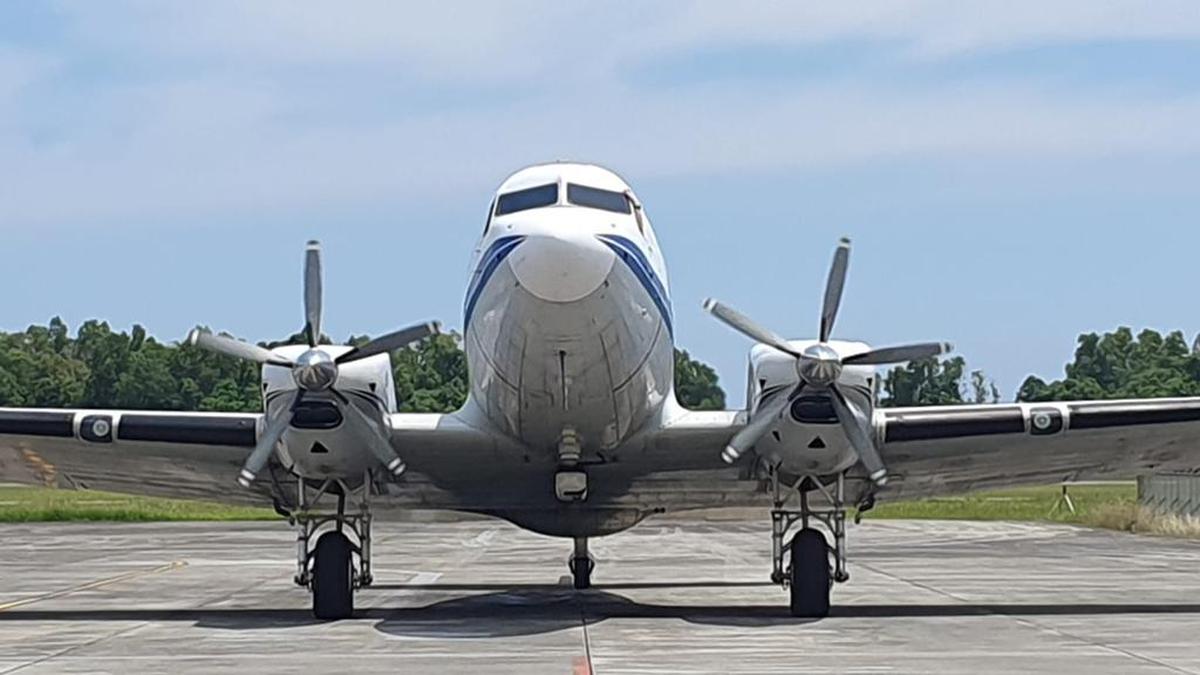OIL starts aerial seismic survey in logistically difficult, hostile areas

Aircraft for aerial seismic surveys to locate hydrocarbon deposits beneath areas difficult to cover terrestrially. Photo: SPECIAL ARRANGEMENT
GUWAHATI
Constrained by tough terrains and hostile environments, an oil exploration major has started an aerial seismic survey for locating hydrocarbon deposits beneath strategic stretches across the country.
The Director General of Hydrocarbons has entrusted the Assam-headquartered Oil India Limited (OIL) with the responsibility of prospecting for oil and gas in “unapprised areas” in the northeastern, southern, central, and northern parts of India.
These areas are Nagaland, Manipur, southern Mizoram, North Cachar Hills of Assam, parts of Arunachal Pradesh, the Cauvery basin, Bastar, Satpura, Spiti-Zanskar, and Karewa.
“These areas could not be covered by a seismic campaign on account of various specific reasons such as a logistically difficult terrain, hostile environment, protected areas, and non-availability of in-principle approval for conducting seismic survey operations under the National Seismic Programme,” an OIL spokesperson said.
The technical term for this aerial survey is “acquisition processing and interpretation of 40,000 flight LKM of airborne gravity gradiometry and gravity magnetics (AGG&GM)“.
“The acquisition of the AGG&GM survey started from [eastern Assam’s] Jorhat airbase on May 27. The second aircraft is scheduled to start acquisition from Dibrugarh airport to cover the northeast,” the spokesperson said.
The aerial seismic survey method is a non-intrusive exploration tool with a quick turnaround time that allows for the fastest possible coverage of a large region. It also offers geoscientific value for the overall evaluation of areas covered by a survey, oil experts said.
Seismic surveys use reflected sound waves to produce a scan of the Earth’s subsurface. They can help locate groundwater, are used to investigate locations for landfills, and characterise how an area will shake during an earthquake, but they are primarily used for oil and gas exploration.
For all the latest business News Click Here

